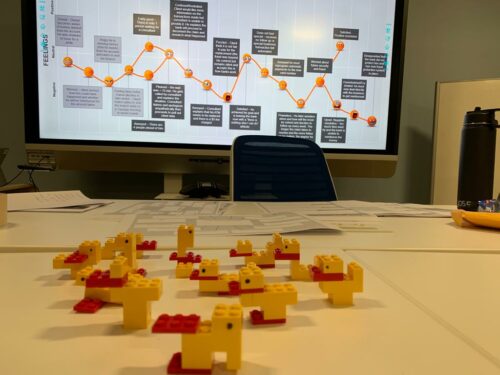
THE INDUSTRY:
Human Resources
THE CHALLENGE:
To redesign a corporate incentives program to achieve higher participation and drive healthy team competition.
THE TASK:
To untangle a complex set of reward metrics to drive employee engagement, provide better odds of success and increase overall satisfaction in the workplace.
THE JOURNEY:
Deep dive • Insight Hunting • Reinvention • Testing • Implementation
THE STRATEGY:
The client had an employee referral program for cross selling company products/services, but it lacked clarity and consistency in how points were accumulated and rewards redeemed. This resulted in alienating employees, dividing them into three very different groups:
• High achievers
• Occasional participants
• Disengaged team members
We set out to find the drivers and motivators for each profile, while hunting for insights on how they perceived the program.
THE APPROACH:
We conducted small-scale focus groups that revealed how disproportionally each group perceived the value of their effort vs the reward. Even more interesting were the findings on how members viewed their performance and how it should be rewarded, which was significantly different from the way the company leads did. To sum it up:
• Occasional participants believed they were high achievers
• Disengaged team members felt “entitled” to more incentives
• High achievers decided to focus exclusively on what they knew yielded high rewards, thus missing out on many other opportunities
THE RESULTS:
We informed the administrative team that the lack of understanding on how the incentives worked was killing the program’s chance of success. We started to simplify the incentives program by shifting the focus of employee communications from complicated reward metrics to giving participants a clear understanding of their potential increase in income if fully engaged in the program.
As a second step, Program Reports were created so that everybody have visibility of other team member’s performance and use it as an incentive for growth. The report also presented actionable items that employees could implement to increase their earnings, while tracking their success over time.
THE OUTCOME:
The incentive program shifted dramatically from complicated to simple. It is now focused on collective growth, by providing positive feedback to team members, served with a small dose of healthy competition. Participants that were underperforming became motivated once they saw their own potential. Meanwhile, high achievers organically took on the role of trainers, and ended up getting larger rewards through a customized development program. It became a win-win situation for all involved.


